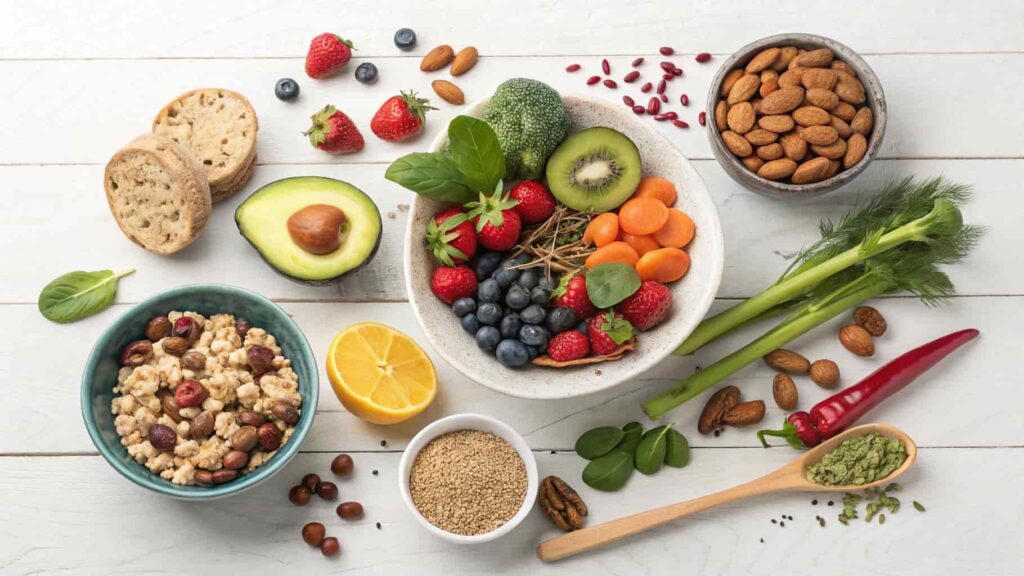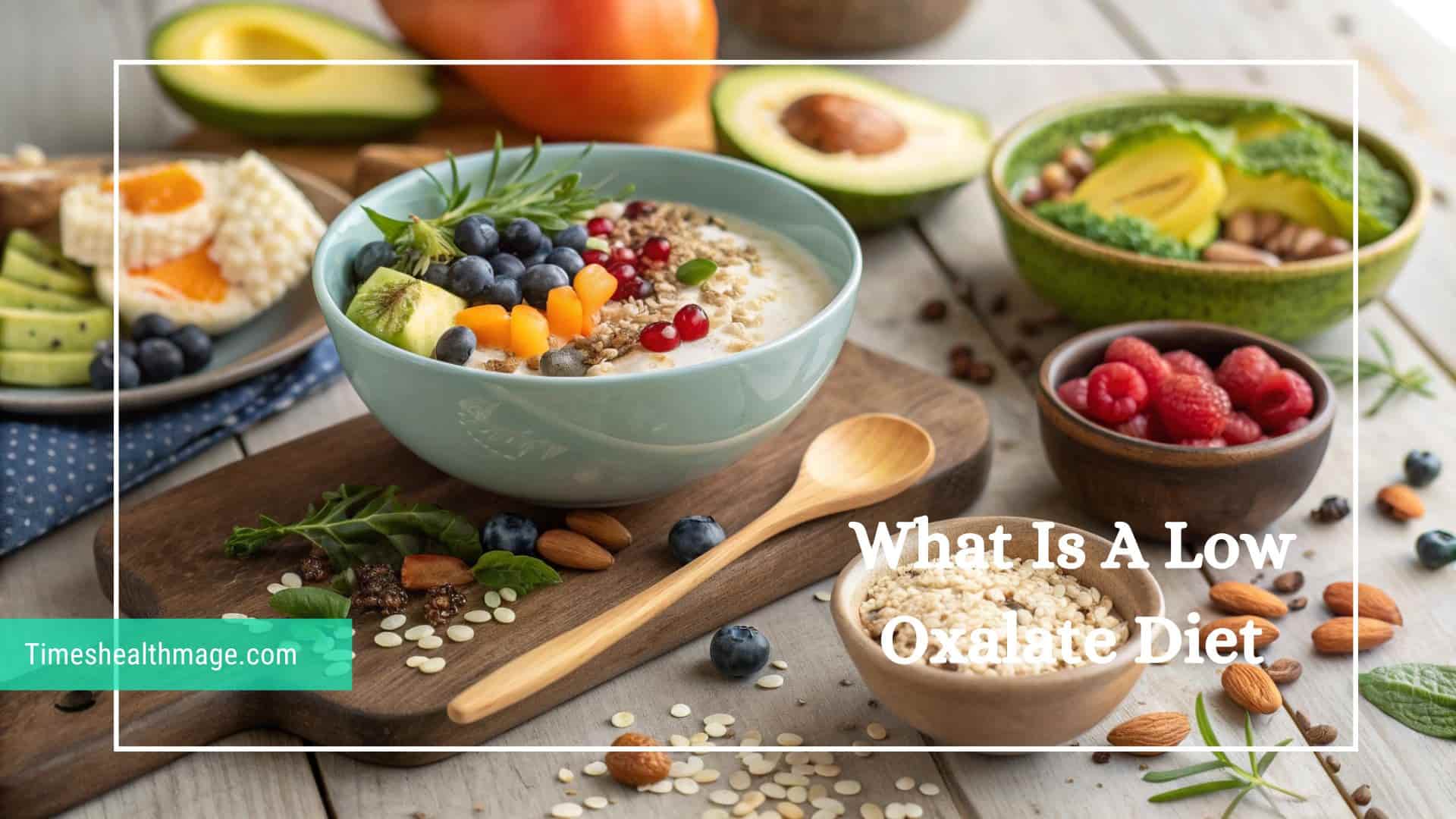The concept of a low oxalate diet has become an important topic for individuals dealing with kidney stones, chronic pain, or even certain autoimmune conditions. This diet focuses on reducing the intake of foods that are high in oxalates, which are naturally occurring compounds found in many plant-based foods. By understanding what a low oxalate diet is and how it works, you can make informed decisions about your health and dietary choices.
In this article, we’ll explore the low oxalate diet in detail, discussing the science behind it, the foods involved, the benefits, and who might benefit from it. Additionally, we’ll break down the information in an easy-to-follow format, ensuring that you understand how this diet could potentially improve your overall health.
What Are Oxalates?
Oxalates, also referred to as oxalic acid, are naturally occurring compounds found in various foods, particularly plant-based ones like vegetables, fruits, nuts, and grains. They are produced by plants as a defense mechanism, as oxalates can help prevent herbivores from eating them. In the human body, oxalates can bind with calcium to form calcium oxalate crystals, which are the most common type of kidney stones.

While oxalates are typically excreted from the body through urine, if there is an excessive accumulation of these crystals, they can cause painful kidney stones. Additionally, oxalates can interfere with the absorption of certain essential minerals like calcium, magnesium, and zinc.
How Do Oxalates Affect the Body?
When oxalates bind with calcium in the intestines or kidneys, they form calcium oxalate crystals. In some individuals, these crystals can grow and develop into kidney stones, which can be quite painful to pass. This is particularly problematic for those with a predisposition to kidney stones or high levels of oxalates in their urine (known as hyperoxaluria).
Aside from kidney stones, high oxalate intake may also contribute to inflammation in joints and other tissues, which is why some individuals with autoimmune diseases find relief from reducing their oxalate intake.
How Does The Low Oxalate Diet Work?
The primary purpose of a low oxalate diet is to reduce the amount of oxalates you consume daily. By lowering your oxalate intake, you minimize the amount of oxalates that bind with calcium in the kidneys, thus preventing kidney stones and reducing the risk of other health issues associated with oxalate buildup. Typically, the goal is to keep oxalate intake below 40–50 mg per day. This is a relatively modest amount compared to what some foods may contain, so following this diet may require cutting out or limiting certain high-oxalate foods.
- Lower Oxalate Intake: The primary objective is to reduce oxalate consumption through food choices.
- Increased Calcium Intake: High calcium intake may help prevent oxalate crystals from forming.
- Balanced Diet: The diet emphasizes nutrient-rich, low-oxalate foods to ensure you receive a wide variety of vitamins and minerals.
What Foods Should You Include In A Low Oxalate Diet? – Discover The Top Choices!
When following a low oxalate diet, focusing on foods that are low in oxalates while providing essential nutrients is critical. Below is a table of some common low-oxalate foods, which you can include in your daily meals.
| Category | Foods |
|---|---|
| Fruits | Apples, Pears, Bananas, Blueberries, Strawberries, Grapes, Cherries |
| Vegetables | Lettuce, Cucumbers, Cauliflower, Zucchini, Bell peppers, Cabbage, Kale |
| Proteins | Chicken, Beef, Fish (salmon, cod), Pork, Eggs |
| Grains | White rice, Pasta, Oats (moderate amounts) |
| Dairy Products | Milk, Cheese, Yogurt, Cream |
| Beverages | Water, Coffee (in moderation), Herbal teas (low oxalate) |
These foods are not only low in oxalates but also packed with vital nutrients like vitamins, minerals, and healthy fats, making them an excellent choice for those following a low oxalate diet.
Foods To Avoid On A Low Oxalate Diet – Protect Your Health!
On the flip side, certain foods are high in oxalates and should be either limited or avoided altogether if you’re following a low oxalate diet. Below is a table showing foods that are high in oxalates.
| Category | Foods |
|---|---|
| Vegetables | Spinach, Swiss chard, Beets, Sweet potatoes, Rhubarb, Potatoes (fried) |
| Fruits | Starfruit, Figs, Raspberries, Blackberries, Oranges |
| Nuts and Seeds | Almonds, Cashews, Peanuts, Sesame seeds, Sunflower seeds |
| Legumes | Soybeans, Lentils, Kidney beans, Black beans |
| Other | Chocolate, Tea (especially black tea), Soy products (tofu, soy milk) |
These foods are often rich in oxalates and, if consumed in large quantities, can increase the risk of kidney stone formation. Being mindful of your consumption of these foods is key to managing your oxalate levels.
Health Benefits Of A Low Oxalate Diet – Need To Know!
A low oxalate diet is not just for people dealing with kidney stones. It may also offer various health benefits for individuals with other conditions. Let’s explore some of the primary benefits of following a low oxalate diet.

Reduced Risk of Kidney Stones:
The most notable benefit of a low oxalate diet is its ability to reduce the risk of kidney stones, particularly calcium oxalate stones. By lowering the intake of foods high in oxalates, the diet helps reduce the amount of oxalate that can bind to calcium and form stones.
Improved Mineral Absorption:
Oxalates can bind with calcium, magnesium, and other essential minerals, reducing their absorption in the digestive tract. By following a low oxalate diet, you can improve the absorption of these minerals, ensuring your body gets the necessary nutrients for optimal health.
Potential Benefits for Autism:
Some research has suggested that children with autism may experience impaired oxalate metabolism and excretion. A low oxalate diet could potentially help reduce some of the neurological and behavioral symptoms of autism, although more research is needed in this area.
Relief from Vulvodynia:
Vulvodynia is a chronic pain condition affecting the vulva, and some studies have shown that a low oxalate diet may provide relief for those suffering from this condition. By reducing oxalate intake, individuals may experience less inflammation and irritation, which are common triggers for vulvodynia symptoms. However, it’s important to consult a healthcare provider before making dietary changes to ensure the best approach for managing the condition.
Improved Symptoms in Autoimmune Diseases:
Some people with autoimmune diseases report feeling better when following a low oxalate diet. The diet may help reduce mineral depletion and improve gut health, potentially alleviating symptoms of autoimmune conditions such as rheumatoid arthritis and lupus.
Who Should Consider a Low Oxalate Diet?
A low oxalate diet is particularly useful for people with specific health concerns, including:
- History of Kidney Stones: If you’ve had kidney stones before, particularly calcium oxalate stones, a low oxalate diet can help prevent recurrence.
- Hyperoxaluria: People who have high oxalate levels in their urine (hyperoxaluria) may benefit from reducing dietary oxalates to prevent kidney stone formation.
- Vulvodynia: Women who experience chronic vulvar pain might benefit from a low oxalate diet.
- Individuals with Autism: Emerging research suggests that a low oxalate diet may help some children with autism spectrum disorder (ASD).
- People with Autoimmune Diseases: Those dealing with autoimmune conditions might find relief from symptoms through a low oxalate diet.
However, it’s important to consult with a healthcare provider before making any significant dietary changes.
What Are The Biggest Challenges Of Adhering To A Low Oxalate Diet?
Adhering to a low oxalate diet can present several challenges, especially given the number of foods that contain higher levels of oxalates. These challenges can make it more difficult to maintain a balanced and nutritious diet while restricting oxalate intake. Below are five common challenges individuals may face when following a low oxalate diet:
Limited Food Choices:
The low oxalate diet often restricts several healthy and commonly consumed foods, such as spinach, beets, and certain nuts. This limitation can make it harder to plan meals, as many fruits and vegetables rich in essential vitamins and minerals are also high in oxalates. To maintain a balanced diet, individuals need to find alternative nutrient-rich foods that are lower in oxalates.
Nutrient Deficiencies:
Certain high-oxalate foods, such as leafy greens, provide important nutrients like calcium, magnesium, and iron. When cutting these out of the diet, it can be challenging to ensure you’re still meeting your nutritional requirements. Careful planning and supplementation might be necessary to avoid deficiencies in key vitamins and minerals while following a low oxalate diet.
Difficulty with Protein Sources for Vegetarians and Vegans:
For vegetarians and vegans, getting enough protein while avoiding high-oxalate plant-based foods can be particularly difficult. Many plant proteins, such as soy products, lentils, and nuts, contain significant levels of oxalates. This may require individuals to look for alternative protein sources or consider animal-based proteins, which may not align with their dietary preferences.
Increased Meal Preparation Time:
Adhering to a low oxalate diet often requires extra time and effort in meal planning and preparation. It may not always be easy to find pre-packaged or restaurant foods that comply with the diet’s restrictions. As a result, individuals may need to prepare most of their meals from scratch, which can be time-consuming.
Social and Dining Out Challenges:
Eating out at restaurants or attending social gatherings can present a significant challenge when following a low oxalate diet. Many foods served at restaurants or in social settings may contain high levels of oxalates, making it difficult to adhere to the diet. This can lead to feelings of isolation or stress about food choices, especially in social situations.
Practical Tips For Following A Low Oxalate Diet – Dont Miss Out!
Adhering to a low oxalate diet doesn’t have to be difficult if you plan ahead. Here are some tips to help you stay on track:

- Plan Meals in Advance: Creating a weekly meal plan ensures you have a variety of low oxalate foods to enjoy. It helps you stay organized and avoid impulse eating that may include high-oxalate foods.
- Work with a Dietitian: A registered dietitian can guide you in creating a balanced, oxalate-friendly meal plan. They can help you meet your nutritional needs while ensuring you stay within the recommended oxalate limits.
- Read Labels Carefully: Many processed foods may contain hidden sources of oxalates, so always check the labels when shopping. This helps you identify and avoid foods that might not be suitable for your low oxalate diet.
- Cook Your Own Meals: Preparing meals at home allows you to control exactly what goes into your food. This makes it easier to stick to a low oxalate diet and avoid any hidden oxalate-rich ingredients.
- Use Oxalate Reduction Techniques: Techniques like soaking, boiling, or steaming can help reduce the oxalate content in some foods. Using these methods in your cooking routine can make it easier to manage your oxalate intake.
- Track Your Oxalate Intake: Tracking your daily oxalate intake ensures you stay within the recommended limits. Keeping a food diary or using an app can help you make better, more informed choices.
What Does Science Say About The Benefits Of A Low Oxalate Diet?
While the low oxalate diet is widely recommended for preventing kidney stones, some recent research suggests that the diet may not always be necessary for everyone. Adequate calcium intake and other dietary measures may also help reduce the risk of kidney stones in certain individuals. More studies are needed to determine the long-term benefits and risks of following a low oxalate diet for various conditions.
However, anecdotal evidence and clinical experience support the use of this diet for individuals with kidney stones, vulvodynia, and hyperoxaluria. It’s important to note that each person’s response to the diet may vary, so it’s best to tailor the approach based on individual health needs. Consulting a healthcare professional can provide guidance on whether a low oxalate diet is appropriate for specific health concerns.
FAQs:
Can I still eat vegetables on a low oxalate diet?
Yes, many vegetables are low in oxalates, such as cucumbers, mushrooms, cabbage, and iceberg lettuce. The key is to choose carefully and avoid the highest oxalate ones. You can still enjoy plenty of fresh produce without overloading on oxalates.
Is a low oxalate diet suitable for vegetarians?
It can be challenging for vegetarians since many plant-based proteins like legumes, soy, and nuts are high in oxalates. Careful planning and guidance from a dietitian can help balance protein needs. Options like eggs and low-oxalate dairy may help bridge the gap.
Does cooking reduce oxalate content?
Yes, certain cooking methods like boiling can reduce the oxalate content in some vegetables. Discarding the water after boiling helps remove oxalates that leach out. This technique is especially useful for foods like spinach or sweet potatoes.
How much oxalate should I consume daily?
Most healthcare providers recommend keeping oxalate intake below 40–50 mg per day if you’re prone to kidney stones. The exact limit may vary based on your health needs. A dietitian can help you determine a safe and personalized intake level.
Can a low oxalate diet help with other health conditions?
Yes, besides kidney stones, some people with conditions like vulvodynia, autism, or fibromyalgia have reported improvements. Research is still emerging in these areas, but anecdotal reports and clinical cases support its use. Always check with your doctor before making changes.
Should I avoid all oxalates completely?
It’s not necessary to eliminate all oxalates unless medically required. The goal is usually to limit, not totally remove, oxalates from the diet. Many healthy foods contain small amounts of oxalates and can be part of a balanced diet.
Can calcium help reduce oxalate absorption?
Yes, calcium binds to oxalates in the gut, preventing their absorption and helping to lower the risk of kidney stones. It’s best to get calcium from food, like dairy, rather than supplements unless advised otherwise. Pairing calcium-rich foods with oxalate-containing meals is helpful.
How long should I follow a low oxalate diet?
The duration depends on your specific health needs and condition. Some people follow it short-term to manage acute symptoms, while others may need long-term changes. Regular follow-ups with your doctor will help track progress and adjust as needed.
Conclusion:
The low oxalate diet is a helpful dietary approach for those at risk of kidney stones or dealing with conditions like hyperoxaluria and vulvodynia. By carefully limiting foods high in oxalates, individuals can reduce their chances of developing calcium oxalate stones and potentially experience improvements in other health concerns. However, it’s important to remember that this diet may not be necessary for everyone, and individual needs can vary.
Working with a healthcare professional or dietitian is crucial to ensure balanced nutrition while following this diet. With proper planning and guidance, a low oxalate diet can support long-term health and well-being. Ultimately, the key is finding a sustainable eating plan that works for your specific health goals.
Also Read:


Leave a Reply